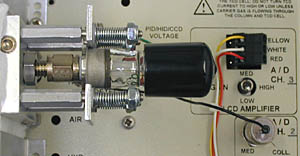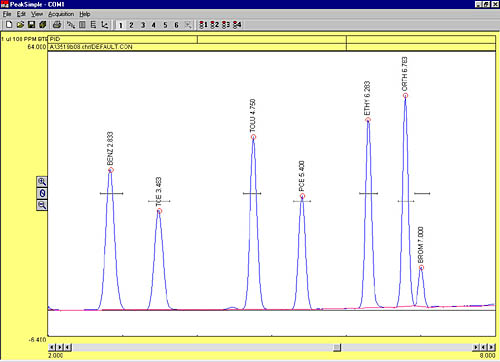|
PID
- Photo Ionization Detector
|
51
|
|
 |
|
The
SRI PID uses the industry standard 10.6eV PID lamp in a spring-loaded
mount, which allows the lamp to be removed, cleaned and re-installed
in seconds, without tools.
|
|
Use of the Photo Ionization Detector is mandated in several EPA methods (8021, TO-14, etc.) because of its sensitivity and selectivity. Detection limits for aromatics are in the low picogram (ppb) range. Because it is non-destructive, it is often run in series with other detectors—typically the FID/DELCD combination detector—for multiple chromatograms from a single injection.
The PID is also able to run on air carrier, which can be useful in situations where no gas is available, or for stream monitoring applications where no column is used to separate compounds.
Unlike other PID designs, the lamp on the SRI PID can be easily removed, without tools, for the periodic cleaning of the lamp window to avoid interference from column bleed build-up. Lamps can last years on the SRI PID because only the lamp window is heated, not the entire body of the lamp.
Our PID consists of an insudtry standard UV lamp mounted on a thermostatted, low-volume, flow-through cell. The temperature is adjustable from ambient to 250°C. The 10.6 electron volt UV lamp emits energy at a wavelength of 120 nanometers, which is sufficient to ionize most aromatics (benzene, toluene, xylene, etc.) and many other molecules (H2S, hexane, ethanol) whose ionization potential is below 10.6eV. Methanol and water, for example, have ionization potentials greater than 10.6eV and do not respond on the PID.
 |
This PID chromatogram shows a separation of a 100 ppm BTEX + bromoform sample using a 0.53mm x 15-meter capillary column and helium carrier gas. |
|
8690-0040
|
PID detector
|
£3,176.00
|
|||